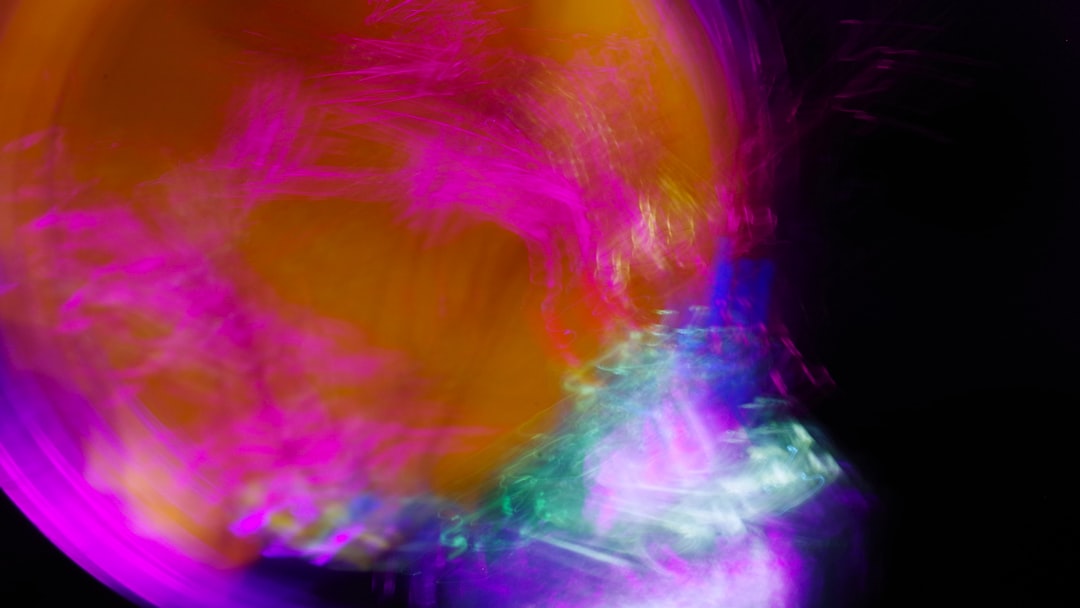Imagine a world where the ordinary transforms into the extraordinary, where a simple ping pong ball becomes a portal to a realm of vivid imagination and surreal experiences. You may find yourself captivated by the phenomenon known as ping pong ball hallucinations. This intriguing concept has gained attention for its unique ability to blend the boundaries of reality and perception.
As you delve deeper into this subject, you will discover not only the fascinating history and science behind these hallucinations but also their psychological effects and cultural significance. Ping pong ball hallucinations are not merely figments of your imagination; they represent a complex interplay between sensory perception and cognitive processes. Whether you are an artist seeking inspiration or a curious mind exploring the depths of human experience, understanding these hallucinations can offer valuable insights into the nature of perception itself.
In this article, you will embark on a journey through the history, science, and cultural impact of ping pong ball hallucinations, ultimately uncovering their potential dangers and the ways to engage with them safely.
Key Takeaways
- Ping pong ball hallucinations are a fascinating phenomenon that can be experienced by anyone with a little creativity and an open mind.
- The history of ping pong ball hallucinations dates back to ancient cultures and has been a source of inspiration for artists, scientists, and spiritual seekers.
- The science behind ping pong ball hallucinations involves the stimulation of the visual cortex and the brain’s ability to create patterns and images in response to sensory deprivation.
- Creating your own ping pong ball hallucinations can be a fun and enlightening experience, but it’s important to approach it with caution and respect for the potential psychological effects.
- While ping pong ball hallucinations can be a powerful tool for self-exploration, it’s important to be aware of the potential dangers and to approach the experience with mindfulness and responsibility.
The History of Ping Pong Ball Hallucinations
The origins of ping pong ball hallucinations can be traced back to various cultural practices and artistic movements that sought to explore altered states of consciousness. You may be surprised to learn that the use of simple objects like ping pong balls in creative expression has roots in ancient rituals and modern art. Throughout history, artists and thinkers have experimented with visual stimuli to evoke emotional responses and challenge perceptions.
The ping pong ball, with its bright color and lightweight nature, has become a symbol of playful exploration in this context. In the 20th century, the rise of psychedelic culture further popularized the idea of using everyday objects to induce hallucinations. You might find it fascinating that artists like Andy Warhol and Salvador Dalí incorporated elements of surrealism into their work, often blurring the lines between reality and imagination.
The ping pong ball emerged as a playful tool in this artistic exploration, allowing individuals to engage with their subconscious in new and innovative ways. As you reflect on this history, consider how the evolution of ping pong ball hallucinations mirrors broader societal shifts in understanding creativity and perception.
The Science Behind Ping Pong Ball Hallucinations

To truly grasp the phenomenon of ping pong ball hallucinations, it is essential to explore the scientific principles that underpin them. At its core, this experience is rooted in the brain’s complex processing of visual information. When you focus on a ping pong ball, your brain interprets its shape, color, and movement, creating a mental image that can sometimes diverge from reality.
This divergence can lead to visual distortions or even full-blown hallucinations, where you perceive things that are not present. Neuroscience has made significant strides in understanding how sensory input can be manipulated to create these experiences. You may find it intriguing that studies have shown how certain patterns of light and color can trigger specific responses in the brain, leading to altered perceptions.
The phenomenon of ping pong ball hallucinations serves as a fascinating case study in how our brains construct reality based on sensory information. As you explore this scientific landscape, consider how your own perceptions might be influenced by external stimuli and internal cognitive processes.
How to Create Your Own Ping Pong Ball Hallucinations
| Steps | Details |
|---|---|
| Step 1 | Gather materials: ping pong balls, markers, and a dark room |
| Step 2 | Draw simple patterns or shapes on the ping pong balls |
| Step 3 | Find a dark room with a single light source |
| Step 4 | Hold the ping pong balls close to your eyes and focus on the light source |
| Step 5 | Experience the hallucinations as the patterns on the ping pong balls interact with the light |
If you’re intrigued by the idea of experiencing ping pong ball hallucinations for yourself, there are several methods you can explore to create your own visual experiences. One popular technique involves using a simple setup with a ping pong ball, a light source, and a darkened room. By shining a light on the ball while focusing intently on it, you may begin to notice subtle changes in its appearance.
This focused attention can lead to visual distortions that mimic the effects of hallucination. Another approach involves incorporating movement into your experience. You might try tossing or rolling the ping pong ball while observing it closely.
The combination of motion and light can create dynamic visual effects that challenge your perception. As you experiment with these techniques, remember that the key lies in your level of focus and engagement with the object. Allow yourself to be open to the experience, and you may find yourself immersed in a world of vibrant colors and shifting shapes.
The Psychological Effects of Ping Pong Ball Hallucinations
Engaging with ping pong ball hallucinations can have profound psychological effects on your perception and emotional state. As you immerse yourself in these experiences, you may find that they evoke feelings of wonder, curiosity, or even anxiety. The act of perceiving something that isn’t there can challenge your understanding of reality and prompt introspection about your own mental processes.
Moreover, these hallucinations can serve as a form of escapism or creative inspiration. You might discover that they allow you to tap into your imagination in ways you never thought possible. Artists often report heightened creativity after engaging with such experiences, as they provide a unique lens through which to view the world.
However, it’s essential to approach these experiences with mindfulness, as they can also lead to confusion or disorientation if not managed properly.
The Potential Dangers of Ping Pong Ball Hallucinations

While ping pong ball hallucinations can be fascinating and enlightening, it’s crucial to acknowledge their potential dangers. Engaging too deeply with altered states of perception can lead to disorientation or anxiety for some individuals. If you’re not careful, you may find yourself struggling to differentiate between reality and illusion, which can be unsettling.
Additionally, for those with pre-existing mental health conditions or a history of substance abuse, these experiences could exacerbate underlying issues. It’s essential to approach ping pong ball hallucinations with caution and self-awareness. If you ever feel overwhelmed or uncomfortable during your exploration, it’s wise to take a step back and reassess your engagement with this phenomenon.
Famous Cases of Ping Pong Ball Hallucinations
Throughout history, there have been notable cases where individuals have reported experiencing ping pong ball hallucinations or similar phenomena. You might find it interesting that some artists have openly discussed their encounters with altered perceptions while creating their work. For instance, renowned painter Wassily Kandinsky often spoke about how his experiences with color and form influenced his artistic vision.
In more contemporary contexts, there are anecdotal accounts from individuals who have experimented with visual stimuli in various settings—be it art installations or personal explorations at home. These stories often highlight the transformative power of engaging with simple objects like ping pong balls in ways that challenge conventional perceptions. As you reflect on these cases, consider how they contribute to our understanding of creativity and human experience.
The Cultural Impact of Ping Pong Ball Hallucinations
Ping pong ball hallucinations have left an indelible mark on popular culture, influencing art, music, and even literature. You may notice references to altered states of perception in various forms of media, where artists use everyday objects to evoke deeper meanings or challenge societal norms. The playful nature of the ping pong ball has made it an appealing symbol for exploring themes of imagination and reality.
Moreover, as society becomes increasingly fascinated by mindfulness practices and self-exploration, the concept of using simple objects for introspection has gained traction. You might find it inspiring how artists and thinkers continue to push boundaries by incorporating elements like ping pong balls into their work, inviting audiences to engage with their own perceptions in new ways.
Exploring the Spiritual and Mystical Aspects of Ping Pong Ball Hallucinations
Beyond their artistic implications, ping pong ball hallucinations also invite exploration into spiritual and mystical realms.
You may find it intriguing that some practitioners incorporate objects like ping pong balls into meditation or ritual practices as tools for focusing energy or intention.
As you delve into these spiritual aspects, consider how engaging with ping pong balls might facilitate a deeper connection to your inner self or the universe around you. Whether through meditation or creative expression, these experiences can serve as gateways to profound insights about existence and consciousness.
Tips for Safe and Responsible Ping Pong Ball Hallucinations
If you’re eager to explore ping pong ball hallucinations responsibly, there are several tips you should keep in mind. First and foremost, create a safe environment where you feel comfortable and relaxed. Dim lighting and minimal distractions can enhance your experience while allowing you to focus on the object at hand.
Additionally, practice mindfulness throughout your exploration. Pay attention to your thoughts and feelings as they arise during the experience; this awareness will help you navigate any discomfort or confusion that may occur. It’s also wise to set boundaries for yourself—know when to take breaks or step back if things become overwhelming.
Lastly, consider sharing your experiences with others who are interested in exploring similar phenomena. Engaging in discussions about your encounters can provide valuable insights and foster a sense of community around this unique aspect of human perception.
The Future of Ping Pong Ball Hallucinations
As you reflect on the multifaceted nature of ping pong ball hallucinations, it’s clear that they represent more than just fleeting visual experiences; they embody a rich tapestry of history, science, psychology, culture, and spirituality. The future holds exciting possibilities for further exploration in this realm as artists continue to push boundaries and scientists delve deeper into understanding human perception. You may find yourself inspired by the potential for creativity and self-discovery that lies within these simple objects.
Whether through artistic expression or personal exploration, engaging with ping pong balls can open doors to new dimensions of thought and experience. As society continues to embrace mindfulness practices and creative exploration, the phenomenon of ping pong ball hallucinations will undoubtedly remain a captivating subject for generations to come.
If you’re intrigued by the concept of hallucinating with ping pong balls, you might find it fascinating to explore the broader realm of sensory deprivation and its effects on the human mind. A related article that delves into the science behind these phenomena can be found on Freaky Science. This article provides insights into how sensory deprivation can lead to altered states of consciousness and the psychological mechanisms at play. For more detailed information, you can read the full article by visiting Freaky Science.
WATCH THIS! 🧠 The Brain Hack That Makes You See Ghosts!
FAQs
What is the purpose of hallucinating with ping pong balls?
Hallucinating with ping pong balls is often used as a method for inducing altered states of consciousness or visual hallucinations for recreational or spiritual purposes.
How does hallucinating with ping pong balls work?
The process involves placing ping pong balls over the eyes and exposing them to a constant source of light, such as a lamp or sunlight. This can create a sensory deprivation effect, leading to visual hallucinations.
Is hallucinating with ping pong balls safe?
While some people may find the experience interesting or enjoyable, it is important to note that inducing hallucinations can be risky and may not be safe for everyone. It is always best to consult with a medical professional before attempting any method of inducing altered states of consciousness.
Are there any potential risks or side effects of hallucinating with ping pong balls?
Some potential risks or side effects of inducing hallucinations with ping pong balls may include disorientation, dizziness, or exacerbation of underlying mental health conditions. It is important to approach this practice with caution and be aware of the potential risks involved.
Are there any legal implications of hallucinating with ping pong balls?
The legality of inducing hallucinations with ping pong balls may vary depending on the specific circumstances and location. It is important to research and understand the legal implications of such practices in your area before attempting them.
Can anyone hallucinate with ping pong balls?
Not everyone may be able to induce visual hallucinations using ping pong balls. Individual responses to sensory deprivation and altered states of consciousness can vary, and some people may not experience the desired effects.
